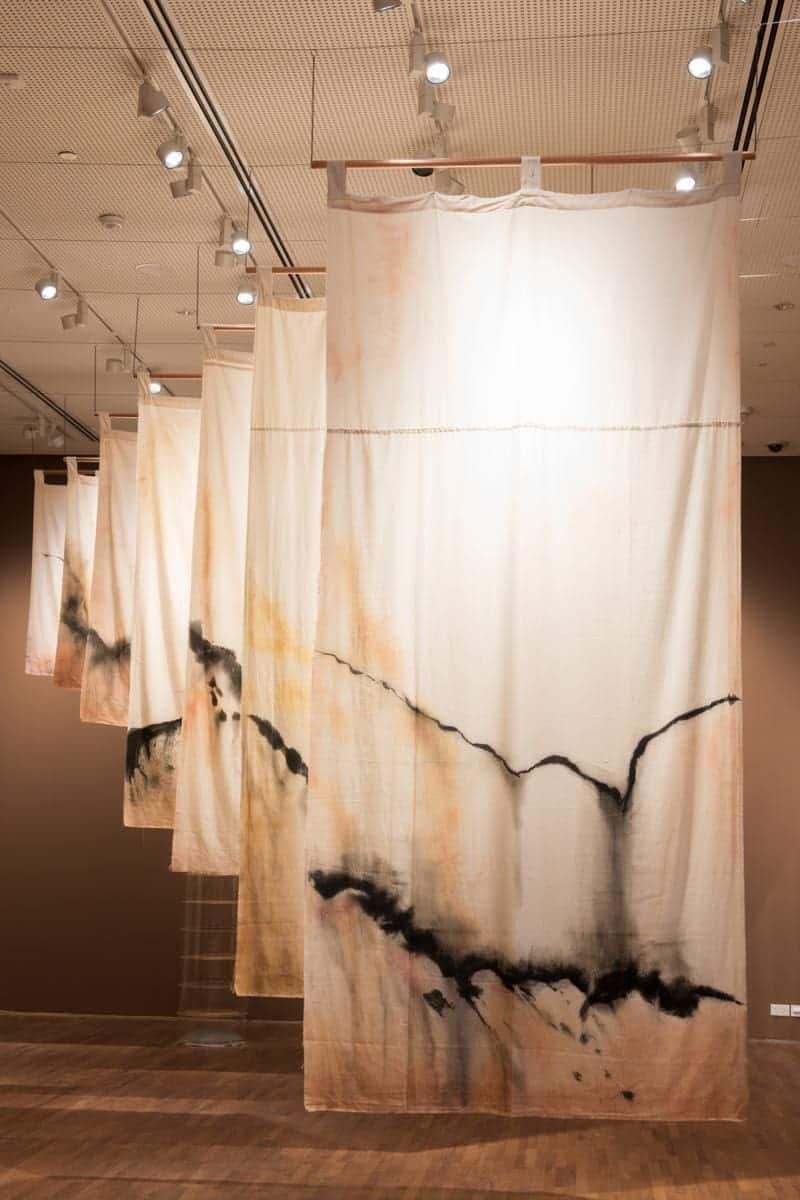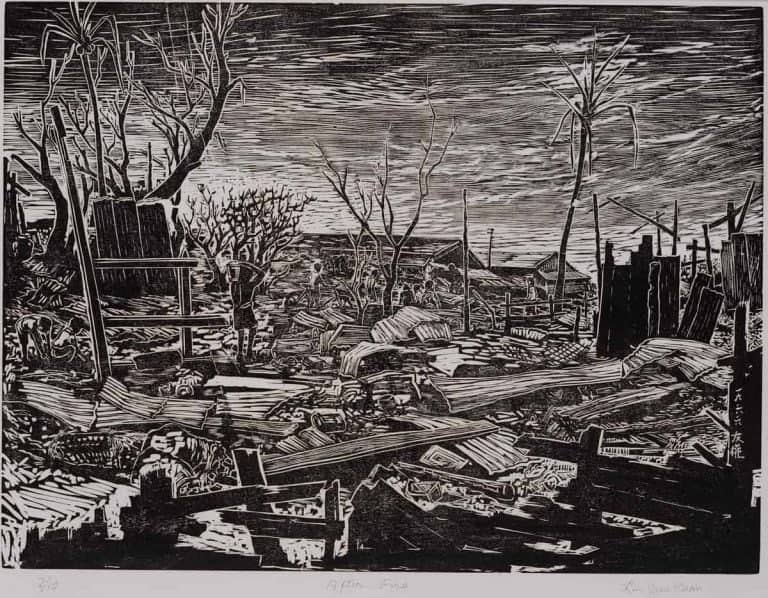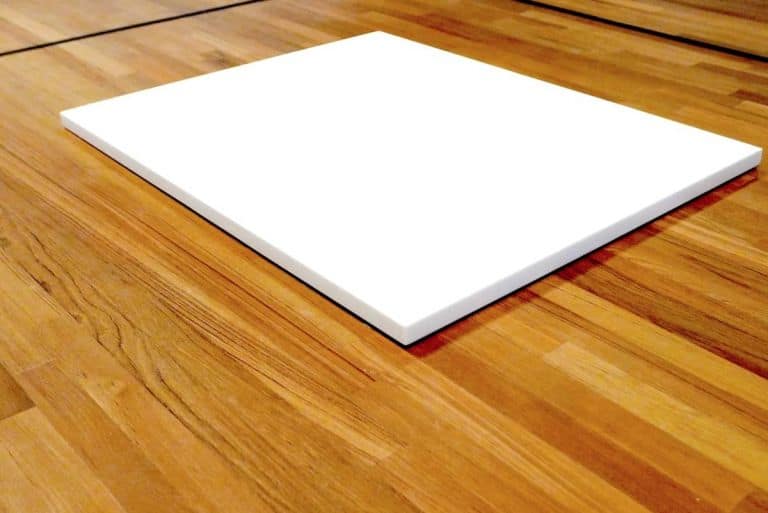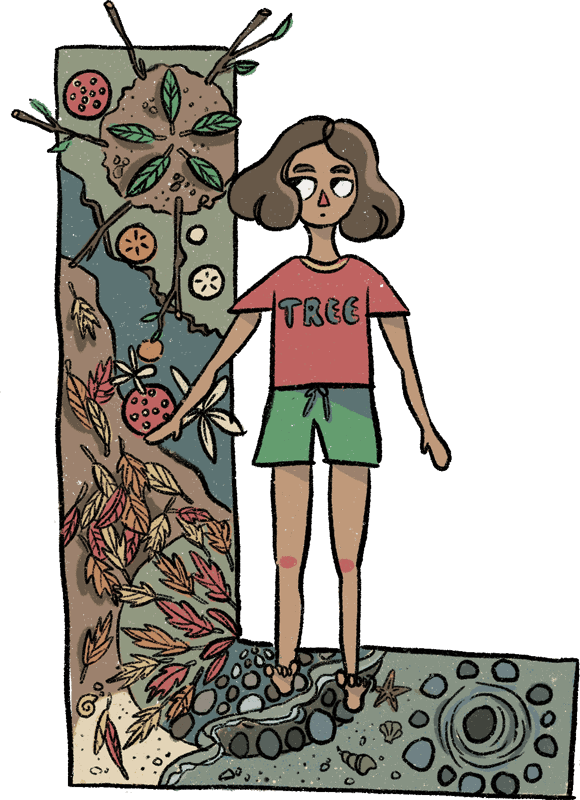
… is for Land Art.
Land art involves using the elements of nature and the natural landscape to create structures, forms, and sculptures. While some artists create site-specific works on a massive scale, using mechanical earth-moving equipment to do so, others make only minimal and temporary interventions to a site. Land artists also make art by bringing materials from the natural world indoors, displacing them from their original site, to create their works.
Sites are often chosen for the inherent meaning they bear – to convey a message, to provoke thought, or to call for action. As such, land art is conceptual in nature – being more about its meaning than its beauty or aesthetics.
Land art emerged in America during the 1960s, when artists wanted to raise awareness of Man’s relationship with the natural world. They did this by using materials from nature itself, naturally and readily available at the site of choice – stones, water, gravel, soil, rocks – even dirt.
Often exposed to the elements, resulting in degradation and conveying a sense of ephemerality – works of land art are often short-lived, transient, and fragile. This is in stark contrast to more traditional or conventional works of art, which are protected in galleries and museums, in strictly controlled environments. Hence, on many fronts, land art marks a rejection of artistic traditions and the commercialisation of art.
Works which are ephemeral and borne out of nature – from a spiral made in the Great Salt Lake, a path forged in a field, to rings of soil formed from the amalgamation of mud and rain – cannot be bought or sold, giving rise to questions about what it means to “consume” art and whether art is a commodity or an agent of change.
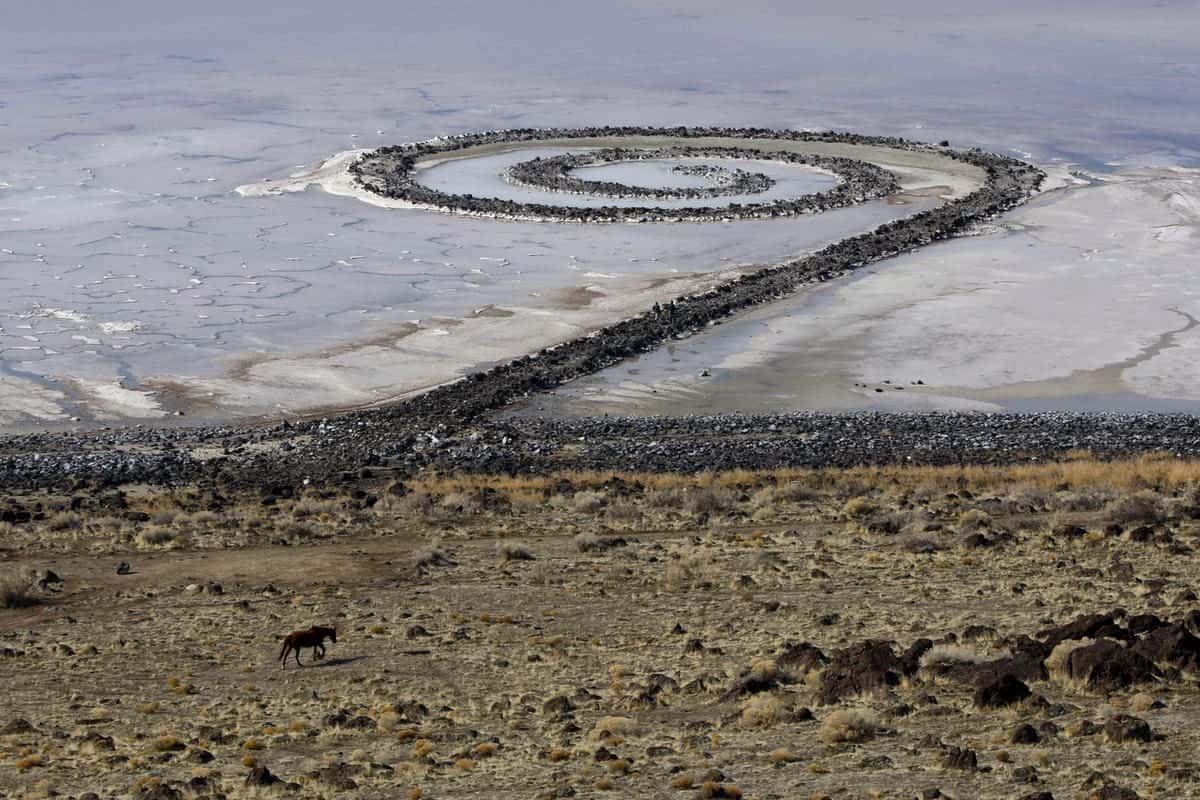
Image credit: Deseret News.
American artist Robert Smithson’s seminal work, Spiral Jetty, was built out in the Great Salt Lake in Utah and comprised a 1,500-foot-long and 15-foot-wide spiral made of basalt rock, earth, stones, algae, and other organic materials. To some extent, this massive spiral was as elusive as it was larger than life. Due to the changing water levels, it was submerged when water levels rose, and reappeared when they fell. Just as visitors were awestruck as they walked in and around it, marvelling at how these materials clung resolutely in spiral formation for years (it appeared above water from 1993 to 1996), in the years that it disappeared, they would feel a sense of decay and impermanence, and be prompted to think about the fragility of our natural surroundings. Having been forged into the earth, it also altered the way people interacted with art – beyond exchanging it as a commodity on the art market, viewers were compelled to share in a lived experience of the artwork.
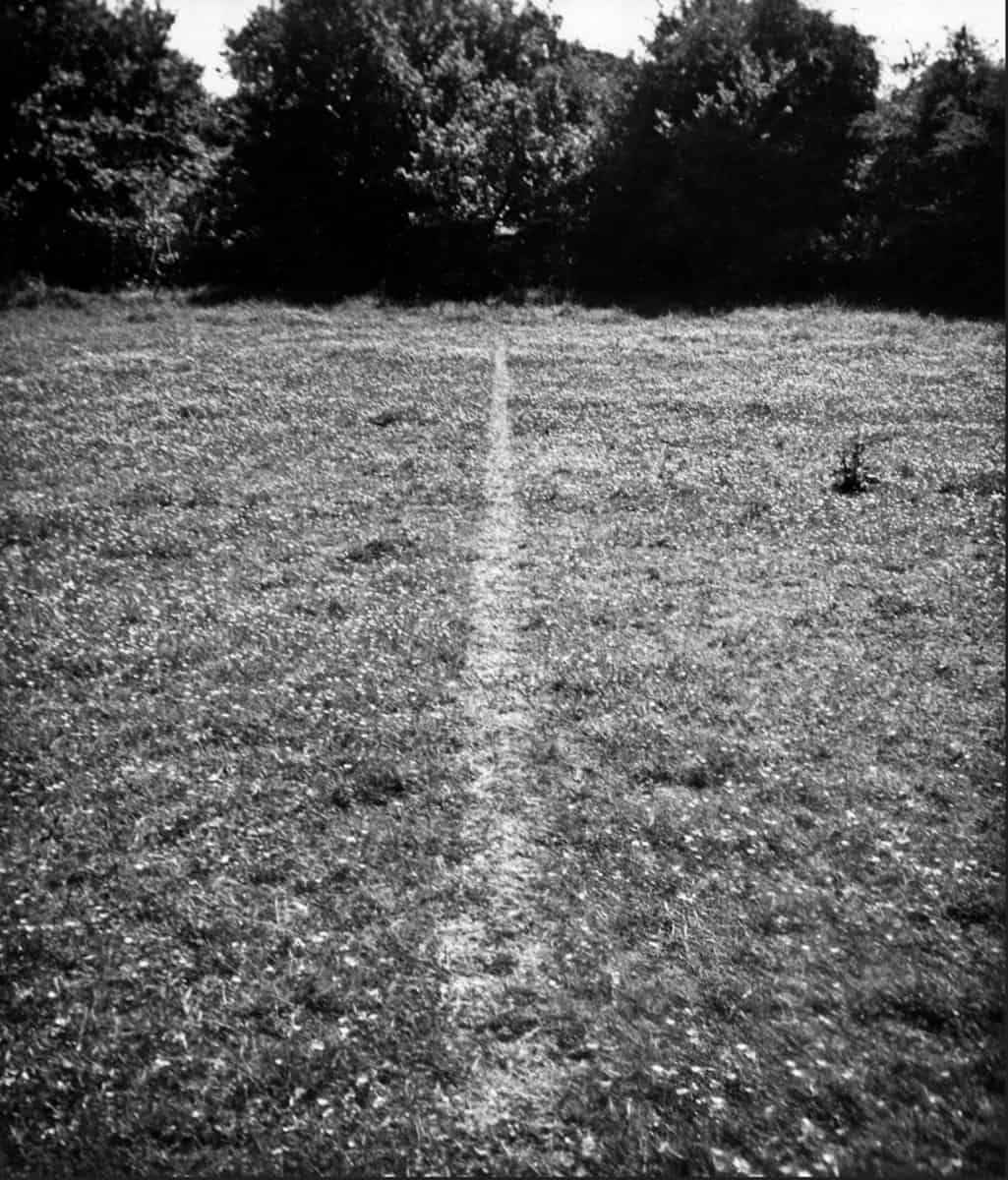
To create his 1967 work, A Line Made by Walking, British artist Richard Long literally walked back and forth in a grass field in Wiltshire, England, until his repeated treads created a straight line across the field. Like footprints in the sand, the line signifies a trace of corporeal presence and bodily action, despite the lack of a human figure. It was Long’s way of interacting with nature, as he explored walking as an art form, as performance (the work is considered one of the precursors of performance art). Long’s work, unlike Smithson’s in Spiral Jetty, was transient, with the trodden grass gradually returning to its natural state, all traces of human presence or imprints fading out.
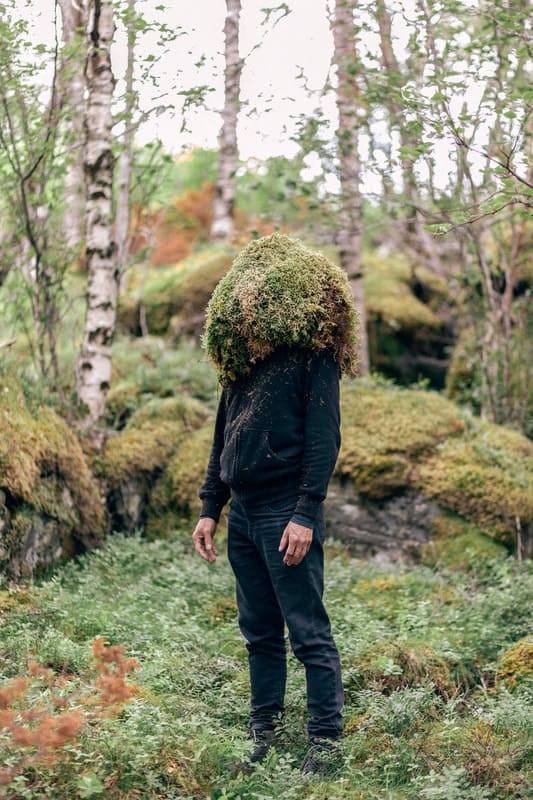
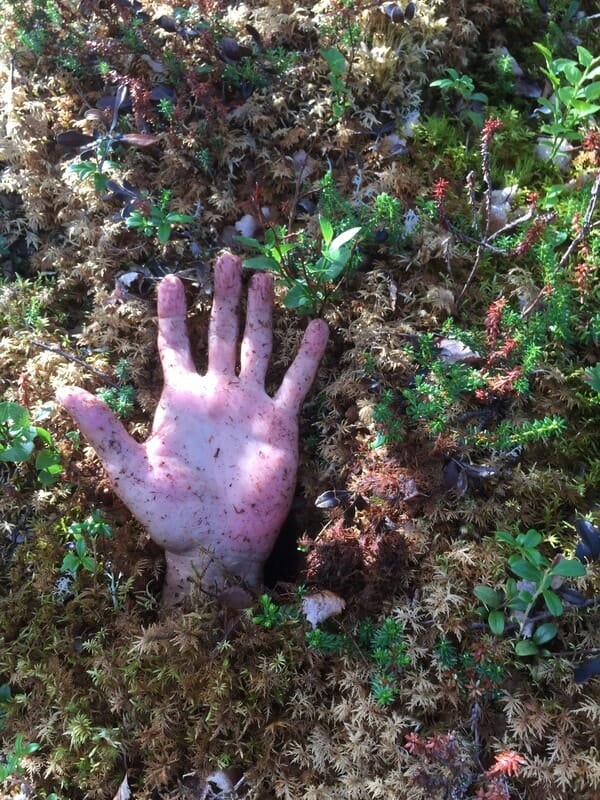

In 2018, Singapore artist Jason Lim spent 10 days in residence at the Kjerringøy Land Art Biennale, during which he took the photographs above. Traversing the rocky coastal landscape of Kjerringøy, awestruck by its mountains and his minuteness, Lim found himself going from feeling the weight and texture of the rocks beneath his feet , to balancing them on his head. As he allowed these “miniature mountains” to constrain his movements, mosses to cover his head, and forest foliage to engulf his hands and arms, he was struck by the fragility of his body.
“I became anonymous, as nature took its presence. Just as the mountains and rocks will eventually turn to sand and dust, so will our body.”
In 2019, he brought this experience back to Singapore – walking down Amoy Street with a rock balanced on his head, drawing curious looks from passers-by. It was indeed a peculiar sight in our busy cityscape, one which he hoped would cause the people he encountered to slow their pace, step out of their mind-numbing routines, and contemplate the significance of the artefact on his head.

In myriad ways, land artists seek to provoke reflection on Man’s relationship with nature through their ground-breaking artworks, going to great lengths to create encounters with nature and in nature.
“When you’re with land art, it’s everything, and it’s bodily … And you can never get that experience from reading about it … You get that experience with your body when you’re there.”
Hikmet Loe, Spiral Jetty scholar
_________________________________
Feature image: The feature image is of Singapore artist Tang Da Wu’s work, Gully Curtains, 1979 ( Image courtesy of the artist and the National Gallery Singapore). Read our article about Tang’s seminal Earth Work exhibition here.
